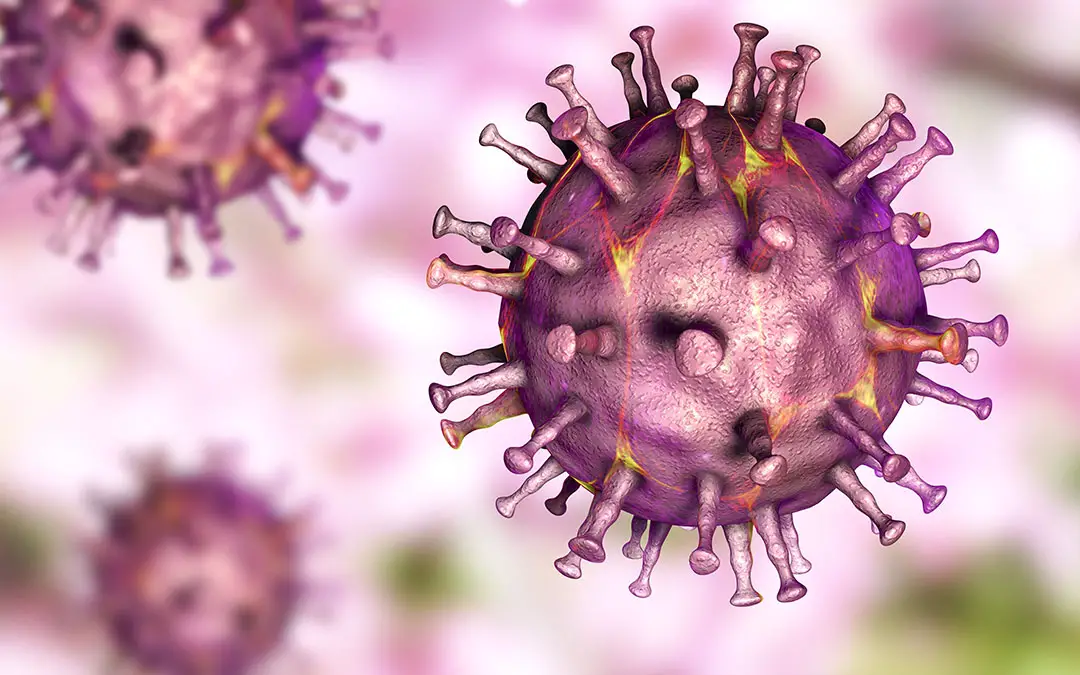African Swine Fever is one of the most devastating viral diseases of pigs. The disease is highly pathogenic, and the mortality rate is around 95-100%. African swine fever (ASF) virus was first deleted in East African countries in the 1900s and spread to European countries in the 1950s. The virus recently wreaked havoc in Asian countries, especially China, North Korea, Vietnam, and East Asian countries.
Economic Importance of African Swine Fever
China is one of the larger producers of pork in the world. More than half the swine population of the world is found in China. In the recent outbreaks in 2019, more than 225 million pigs died due to ASF virus infections. The outbreaks have profound economic implications for the swine production of the farmers and the pork industry. Almost 25% of the global pig population died or was culled during the outbreaks.
Causes of Swine Fever
African Swine Fever disease is caused by the ASF virus, a double-stranded DNA virus under the family Asfarviridae. The virus causes hemorrhagic enteritis and fever with high mortality rates in wild bores, domestic pigs, warthogs, bushpigs, and soft-coated ticks Ornithodoros. The soft ticks act as a reservoir of the virus. The virus replicates in the cytoplasm of infected cells. The ASFV is the only double-stranded DNA virus transmitted by the arthropod vectors.

How is African Swine Flu Spread?
The ASF virus is transmitted by direct or indirect contact with infected pigs. The pigs are highly social animals and stay close to one another. They are difficult to separate from each other. The virus spread through feces, body fluids, infected porks, and contaminated carcasses. The virus can survive in bone meal and ham stores at 4° C for over five months. The asymptomatic carrier animals may carry the virus in tissues and blood for an extended period.

The ASF virus is also transmitted by the soft tick Ornithodord porcinus. The virus does not produce any disease in ticks but carries the infection for more than a few years. The soft tick spreads the virus by sucking the blood of non-infected pigs.
Clinical Signs of ASF Infection
The clinical signs and symptoms vary with the virus strain’s virulence and the animal’s immune status. The disease may be acute or chronic based on the signs and symptoms of the disease. The highly virulent strain is highly pathogenic, mortality is 95-100%, and clinical signs are:
- High fever (103-104° F).
- Loss of appetite.
- Depression.
- The bleeding causes the blackening of the skin.
- Coughing.
- Abnormal breathing.
- Spontaneous abortion in pregnant animals.
Less virulent strain causes chronic disease, the mortality rate is 35-40%, and the clinical signs are:
- Reduced growth.
- Inflammation of the skin.
- Skin lesions.
- Secondary bacterial infection.
- Swollen joints.
- Pneumonia.
- The wild bores are symptomatic carriers of the virus.
Diagnosis of African Swine Fever
The disease can be diagnosed in the following ways:
- Clinical history of incidence of the disease.
- Specific clinical signs and symptoms.
- Rapid blood test.
- ELISA.
- Real-Time PCR.
Treatment of Swine Fever
There is no effective preventive treatment available for this viral disease. The mortality rate is exceptionally high in acute cases, and most animals die before showing clinical signs. The chronic case of the disease may be given palliative treatment.
- Antibiotics to prevent secondary bacterial infection.
- Vitamin and mineral supplements improve the nutritional status of animals.
- Supplement to improve the appetite of pigs.
Prevention of African Swine Fever
There is no commercial vaccine available against the ASF virus. The virus was identified more than 100 years ago, but still, there is no vaccine.
- The African Swine Fever virus incubation is 4-18 days, and infected animals shed the virus through feces for up to 70 days.
- The infected animals should be slaughtered or culled.
- The researchers of USDA developed an experimental vaccine that was found to be 100% effective against ASFV.
Doses African Swine Fever Dangerous to Human
ASF virus does not transmit to humans from pigs. There is no evidence found to affect the virus from swine to man by direct or indirect contact, eating pork, or pork products. The virus multiplies in the monocytes and macrophages of pigs. There are specific receptors for the virus in a pig’s body that is absent in human cells.
Final Talk on African Swine Fever
Pigs are the primary source of household income in many countries. The ASFV has a devastating effect on family-run pig farms by death and aggressive culling of infected pigs. Pork meat is one of the primary protein sources in the human diet and accounts for more than 35% worldwide. The disease significantly reduced the pig population and greatly affected the economy.